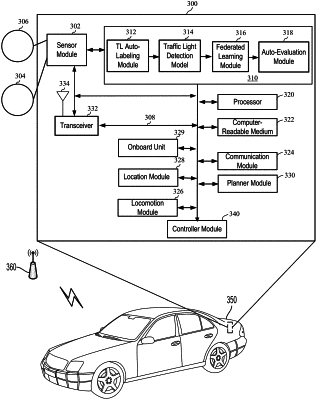| CPC G06F 18/214 (2023.01) [B60W 60/001 (2020.02); G06F 18/217 (2023.01); G06V 20/584 (2022.01); B60W 2552/00 (2020.02); B60W 2555/60 (2020.02); B60W 2556/45 (2020.02)] | 18 Claims |

|
1. A method for traffic light auto-labeling, comprising:
aggregating vehicle-to-infrastructure (V2I) traffic light signals at an intersection to determine transition states of each driving lane at the intersection during operation of an ego vehicle;
automatically labeling image training data to form auto-labeled image training data for a traffic light recognition model within the ego vehicle according to the determined transition states of each driving lane at the intersection;
planning a trajectory of the ego vehicle to comply with a right-of-way according to the determined transition states of each driving lane at the intersection according to a trained traffic light detection model;
replacing a current version of the traffic light recognition model during operation of the ego vehicle with an updated version of the traffic light recognition model when a performance of the updated version of the traffic light recognition model is greater than a predetermined value; and
operating the ego vehicle according to the updated version of the traffic light recognition model.
|